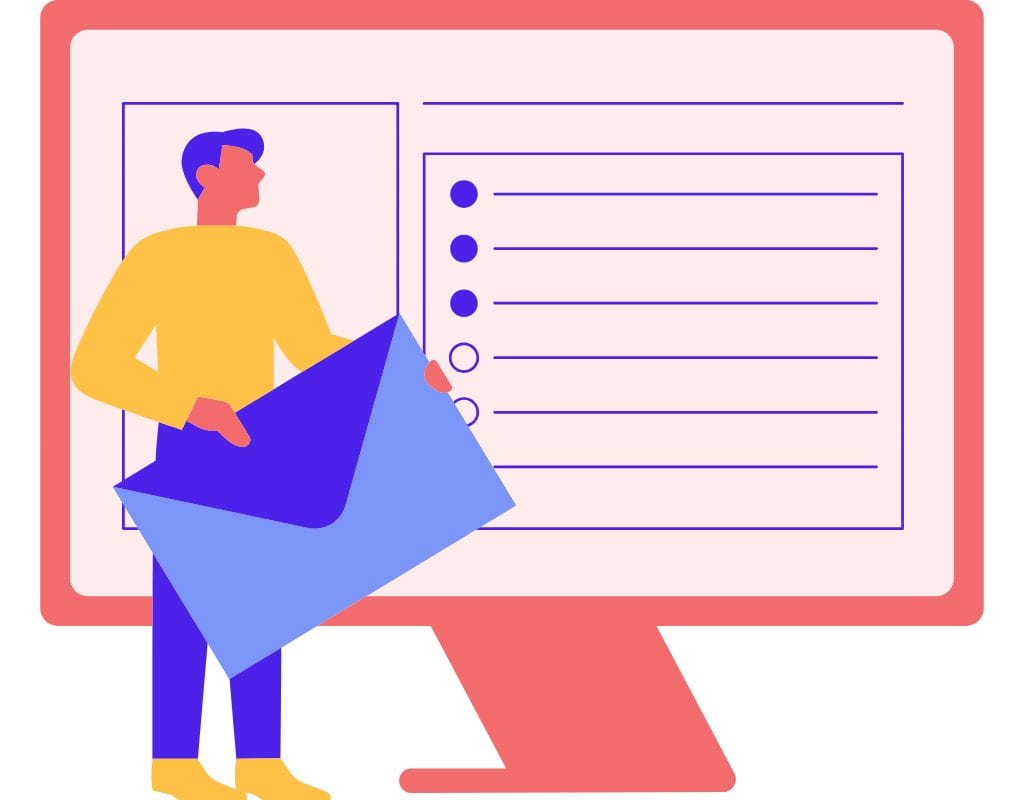Email is an important way to talk to people, both personally and professionally. However, sometimes your emails may get blocked, which can be very annoying. When this happens, it can be confusing, and you may wonder why your words aren't reaching the right people. This blog post will explain email blocking and discuss the most common causes. You need to know why your email is being blocked in order to fix the issue and ensure the successful delivery of your messages. We will investigate the secrets of email blocking and discover how to stop and fix this problem.
Understanding Email Blocking
The recipient's email server or screening system blocks an email from reaching the right recipient or marks it as spam. Things such as the sender's reputation, the text of the email, or technical problems can start an automatic process. So, you need to know the basics of email stopping to get through this problem successfully.
When an email bounces back, it means it has been blocked. The system will send the sender an error message explaining why it blocked the message. That's why sending important emails or running email marketing efforts can be annoying.
Email blocking may happen because blacklisting IP addresses, sending too many emails, triggering spam filters with email content, a down recipient's email server, or a hacking attack. All of these things may be blocking your emails.
If you understand the basics, you can take steps to stop email blocking and ensure that your emails get delivered. In the next part, we will discuss each of these reasons in more detail and provide you with ways to unblock your emails and maintain normal communication.

What Makes Your Email Blocked?
Knowing the reasons why emails might be blocked is important for fixing the problem and ensuring that your emails reach the right people. In this part, we will discuss the most common reasons why your email might get blocked.
Blacklisted IP Address
When a website bans your IP address, one of the main reasons for blocking your email is because of it. "Blacklisted" means your IP address is related to spam or other bad activity. Someone could get into your email system, or you could send emails that break spam rules without meaning to. When recipient servers or the spam filter detect your IP address blacklisted, they can block your emails or send them directly to the spam folder.
You're Sending Too Many Emails
Another reason emails get blocked is when a sender dispatches several emails simultaneously. Because some email servers and service companies set limits on the number of emails that a single IP address or account can send. Spam filters could block your emails if you send more than these amounts.
Your Email Content Triggers Spam Filters
The content of those emails is very important if they block or tag your emails as spam. Certain words, phrases, or formatting patterns in your emails may cause spam filters to block them. Common triggers include a lot of promotional language, misleading subject lines, or files with malware.
Recipient's Email Server is Down
The problem sometimes lies with the receiver's email server. Your emails may not be delivered if there are technical issues or a short downtime. In this case, the delay is not caused by what you did but by a problem on the other end.
Hackers Gain Access to Your Email Account
Email blocking can also happen if hackers get into your account and change your password. If someone gets into your account without your permission, scammers may use it to send junk emails or do other malware. As a result, they could flag your account and block your emails.
You should investigate why emails are often blocked and take the necessary steps to resolve the issue. We will talk about ways to check for and fix stopped emails, as well as ways to keep them from happening.

How to Check if Something is Blocking Your Emai
Ensuring that you send your texts to the right people is an important part of good communication. Before doing anything else, make sure to check that your emails are not being blocked. In this part, we will explore a few different ways to determine if something is blocking your email.
Check Your Email Bounce Backs
Receiving bouncebacks or delivery failure messages is one of the first signs that someone might be blocking your email. These alerts usually contain an error message or a clear explanation for why the email didn't work. By looking closely at these bouncebacks, you can learn useful things about the blockage and figure out what might be causing it.
Use Online Tools to Check for Blacklisting
A number of online tools made just for this reason can be used to find out if your IP address or domain is on a blacklist. These tools check many spam databases and blacklists to determine if they have marked your email server or name as spam. You can quickly find out if your IP address or domain name is on any blacklists using these tools. You can take the right steps to fix the problem if it is.
Test Email Delivery with Different Email Accounts
Another way to find out if something is blocking your email is to test its delivery using different email accounts. Send test emails to the same person from different email accounts, such as accounts from different email service companies or domains. If some email accounts keep being blocked or go to spam, there may be a problem.
These methods can confirm whether something has blocked your email and explain why. Finding the obstacle is the first step to fixing the problem and delivering your emails. Next, let's talk about preventing email blocks.

How to Prevent Your Emails From Being Blocked
By ensuring your emails aren't blocked, you can communicate effectively and reach the intended recipients. So, this part will discuss different ways to avoid email blocking and the most effective methods to accomplish tasks.
Maintain a Good Email Sending Reputation
In order to avoid email blocking, you should build and maintain a good image for sending emails. ISPs and email service providers analyze factors such as the number of opened emails, the number of complaints, and the number of sent but unreceived emails. Do these things if you want to keep your good name:
- People should only send emails to those who have agreed to receive them.
- You should clean up your email list by regularly getting rid of old or invalid names.
- Ask people to add your email address to their contact list so that your emails don't get marked as spam.
- To find problems quickly and fix them, keep an eye on your email delivery, bounce, and feedback rates.
Avoid Spam Triggering Content
Why your emails can be identified as spam because of their content. Avoid spam-like content and follow these tips to avoid email blocking:
- Ensure that the subject lines of your emails are clear, important, and true to the content.
Avoid using excessive advertising language, capitalizing too many letters, or making false claims.
Ensure that you write your emails correctly and avoid any HTML mistakes.
Avoid including files or links to websites that appear sketchy or could be harmful.
Ensure that you clean your email list.
To avoid email blocking, you should keep your email list clean. Check and update your email list often to include active and interested recipients. Remove emails that return to the sender or receive complaints. By keeping your list clean and updated, you boost email delivery and prevent email blocks.
Use an Email Service Provider You Can Trust
Choosing a trustworthy email service provider (ESP) can significantly impact the delivery of your emails and prevent blocking issues. Look for ESPs that have a good name, offer reliable infrastructure, and have strong ways to block spam. A good ESP will also give you tools and information to track and improve the delivery of your emails.
By taking these precautions, you can ensure that your emails get to their destinations and lessen the chance that they will be stopped. In the next part, we'll discuss how to get your email back if it was blocked.

How to Unblock Your Email
If your email has been blocked, unblock it immediately to communicate with your contacts once more. To do so, you can follow these steps.
Request Removal from Blacklists
If your IP address or domain name is on a ban, you will need to ask to be taken off of those lists. Firstly, use the online tools we talked about earlier to find out which blacklists your email server or website is on. Go to the websites of the blacklists and follow their instructions on how to get off the list. You usually send a request for removal along with the necessary proof that you are the sender.
Fix Technical Problems
You should fix the problems with your email server or setup right away if it is blocking your email. Check to see if there are any DNS or setup errors with your email server. Moreover, your email service provider or IT team can help you figure out what's wrong and fix it if it's a technical problem.
Contact the Recipient's Email Administrator
If the problem only occurs with one recipient or domain, you should talk to their email administrator or IT staff about it. Describe what's going on and include any useful information, such as error numbers or bounce-back messages. The person in charge of the recipient's email account might be able to look into the problem and fix it on their end, making sure that your emails get to the right person.
You can improve your chances of getting your email unblocked and returning to normal communication by following these tips. If you want to fix the problem, you need to be bold and persistent because email blocking can make it hard to communicate. Don't forget to take preventative steps to avoid future blockages and keep your reputation online when sending emails.
For smooth communication, you must understand why email has been blocked, take steps to stop it, and unblock it. If you follow these tips, your emails will get to the right people, and you won't have to deal with the hassle of email blocking.

